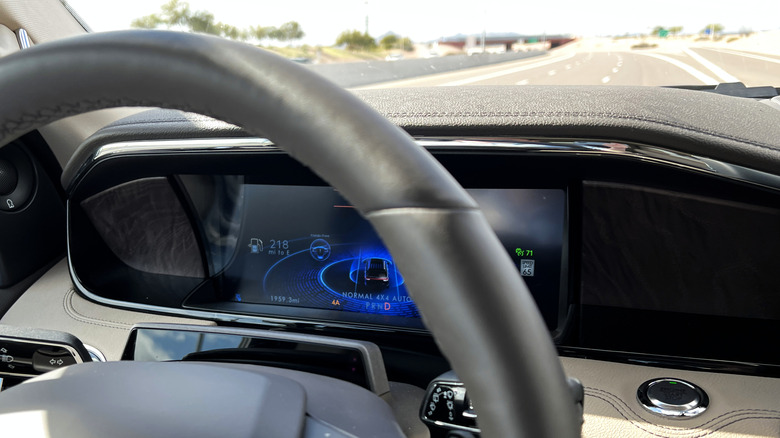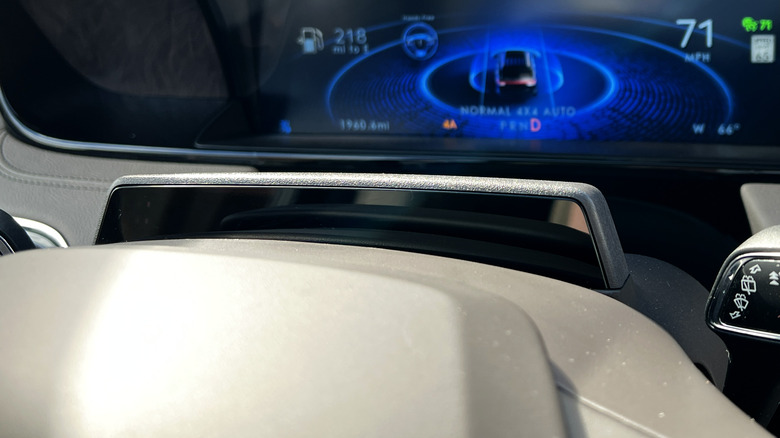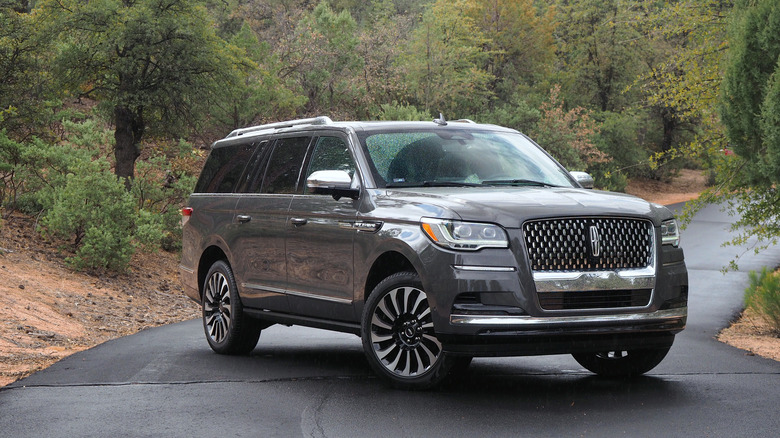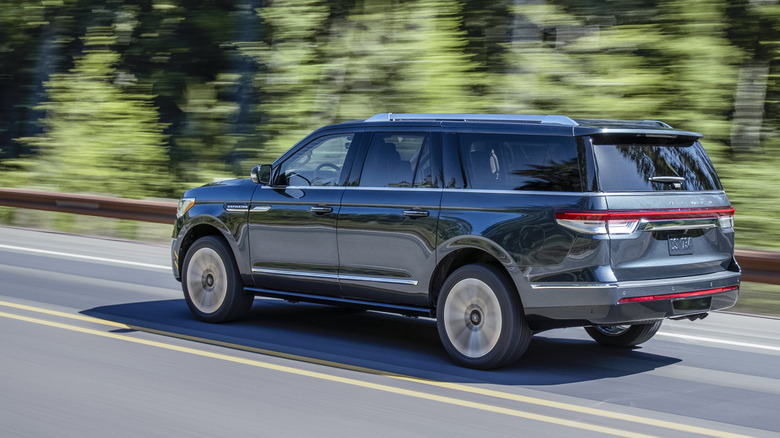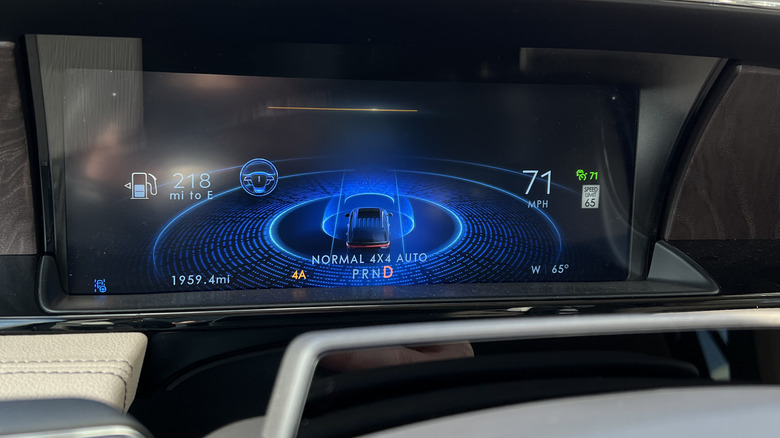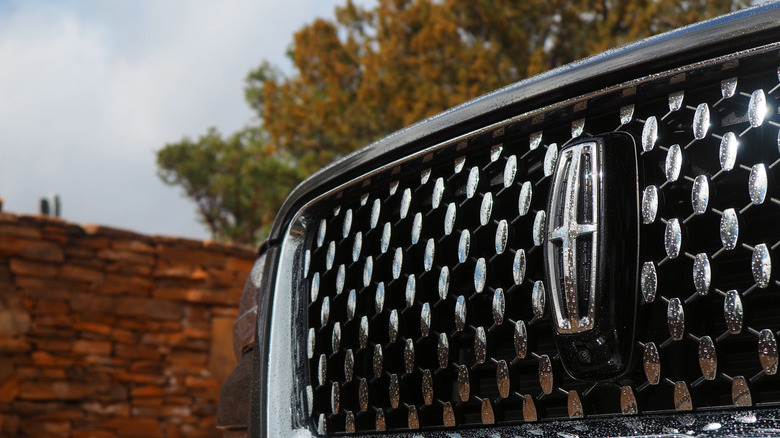Lincoln ActiveGlide (Ford BlueCruise) First Drive: Hands-Free Highs And Lows
Taking your hands off the wheel of a near-6,000 pound 2022 Lincoln Navigator when you're in 70 mph traffic requires no small amount of confidence, but that's just what Lincoln ActiveGlide encourages you to do. The latest in a slowly growing number of hands-free driver-assistance systems, ActiveGlide — or Ford BlueCruise as it's known in Ford's line-up — debuts on Lincoln's largest and most lavish SUV, and promises less stress on lengthy highway jaunts. In the process, it takes on far more established rivals, like GM's Super Cruise.
As should go without saying — but which still needs to be pointed out, given the ongoing confusion about driver-assistance technologies — Lincoln ActiveGlide (or Ford BlueCruise) doesn't make a vehicle autonomous. This is still a Level 2 system, and the driver is still responsible for its safe operation. Currently, there is no car, SUV, or truck available on the market which can drive itself without demanding human involvement.
Standard on the 2022 Navigator Reserve and Black Label trims, Lincoln pitches ActiveGlide as a convenience feature, and it builds on the automaker's existing adaptive cruise control with stop-and-go, lane centering, and speed sign recognition. Where that system requires you to keep your hands on the wheel, applying torque so that the car knows you're still supervising and prepared to take over, ActiveGlide Hands-Free uses an attention-monitoring camera instead.
Hands-free, not self-driving
It's mounted in a bar behind the steering wheel, and uses infrared emitters and an IR camera to track the position of both your head and your eyes. As long as that deems you're paying attention, and as long as you're driving on one of the pre-mapped stretches of divided highway in the US and Canada that Ford brands as "Hands-Free Blue Zones," — of which there are currently 130,000+ miles — ActiveGlide and BlueCruise will allow you to take your hands off the steering wheel.
If you look away, whether that's to watch the scenery, play with the infotainment system, or anything else, the system will demand your attention back. Ignore the escalating series of beeps and visual warnings, and eventually, ActiveGlide will deactivate altogether.
Ford and Lincoln aren't the first to offer such a system commercially, of course. GM has had its Super Cruise available on select Cadillac models for some years now, and has been gradually spreading it across its other nameplates. Super Cruise's approach is basically the same: a camera keeps track of your attention, and as long as you're on a stretch of pre-mapped highway it can steer itself without a restraining hand on the wheel.
Again, this is not autonomous driving, where by definition the vehicle would be able to operate itself without a human being involved at all. All signs continue to point to such systems being far from market-ready. What it is, though, is a way to alleviate some of the tedium and mental workload from longer journeys and highway traffic jams.
First impressions are good
I'm a big fan of Super Cruise, and I was mightily curious to see how Ford and Lincoln's system compared. In my experience with various Cadillac models, I've found I end up road trips feeling fresher and less mentally tired. While I'm still involved with the process of driving, it's generally easier overall.
When it's working as promised, ActiveGlide has the same core charms. There's something disconcerting, initially, at taking your hands off the wheel, especially when you're in highway-speed traffic. Your fingers hover just over it, waiting for that twitch or jolt which will confirm your fears that the car simply can't be trusted to control itself.
A few miles later, though, and things were going swimmingly. The Navigator kept its not-inconsiderable bulk neatly paced with the traffic ahead, without getting too close to their bumper for anyone's comfort (you can adjust that, as you would with regular adaptive cruise control, with a button on the steering wheel). More surprising still was how well it worked when I approached congestion, with the Lincoln smoothly slowing to a halt and then automatically picking up again when the car in front moved. If your daily commute has you facing regular jams, this is undoubtedly a far nicer way of dealing with them.
Confusion in the corners
Where things started to struggle a little was in the corners. Or, more exactly, not all of them, but enough to be confusing. Sometimes ActiveGlide would demand I take over the steering duties as we entered a turn on the highway, only resuming once we were through. The system, Lincoln tells me, is designed that way, with a fairly conservative approach to what cornering it can safely handle.
Problem is, it doesn't seem entirely consistent: certainly not enough to be predictable. On some tighter turns, where I was readying myself to take over the steering, ActiveGlide didn't end up calling upon me. In other, seemingly far less challenging corners, I was surprised to find the system was preparing to deactivate.
It's not something I've observed in my multiple experiences with Super Cruise, and it definitely undermines some of your trust — and your degree of relaxation — with ActiveGlide. Knowing you'll need to be involved in more aggressive turns is one thing, but the uncertainty means you're always second-guessing just how adept the system will be. It kept me on my toes and attentive, yes, but I'm not sure it was any more relaxing overall than simply driving myself would've been.
A UI that still needs work
Adding to that is the way ActiveGlide is presented in the instrument cluster and head-up display. Super Cruise has a dedicated light bar embedded in the steering wheel, which flashes different colors according to the various stages of the system's operations. Lincoln, however, uses graphics, icons, and colorful highlights in the Navigator's regular instrument cluster instead, and I think it could be making better use of them.
Central is a graphic of the SUV, surrounded by a blue halo. It doesn't, though, give you a live readout of what vehicles ActiveGlide's sensors have identified around the Navigator, unlike Tesla's Autopilot and its dynamic interface. The indicator for ActiveGlide being operational is a smaller steering wheel graphic, offset to the side.
Potentially confusingly, Lincoln refers to both its hands-on and its hands-off systems under the ActiveGlide brand. For the former, the small wheel graphic has two hands gripping it; for the latter, the hands are gone and there's a tiny "Hands-Free" legend above it. There were times, as I peered at the display trying to make sure which system was in play, when ActiveGlide started complaining that I was paying insufficient attention to the road ahead.
It feels like Lincoln could safely flip those car and steering wheel graphics around, and make the latter much larger and easier to understand at a glance. I'd not argue with a broader range of beeps and tones to communicate system status, either, as there were moments where I was being called on to resume control but that wasn't immediately obvious.
A good start, with room for OTA improvement
The good news is that, for the most part, Ford and Lincoln could address a lot of this uncertainty with software updates. ActiveGlide and BlueCruise are part of the automaker's OTA-capable system, with the potential for upgrades, tweaks, and new features being added remotely.
We've seen GM make use of its similar system, adding new Super Cruise features and massaging behaviors like lane-positioning. That's something else that ActiveGlide could do with having adjusted, as I realized when a car in the lane beside me swung wide because the beefy Navigator was uncomfortably close to the white lines. Hopefully Ford and Lincoln will also eventually use it to deliver things like automatic lane-changes, which Super Cruise and Autopilot can do, but BlueCruise and ActiveGlide currently cannot.
Beyond that, the automaker isn't talking about further steps toward expanding the system. Building out the mapping network of divided highways is one thing, but we've seen big promises from General Motors about its next-generation Ultra Cruise system. That will apparently be able to not only operate on highways, but eventually 95-percent of all driving scenarios according to the automaker: that includes "nearly every road including city streets, subdivision streets and paved rural roads," GM promises. The human driver behind the wheel will still need to monitor it, but it would be a huge step forward from Super Cruise today.
I'm of the opinion that true autonomous vehicles are still quite some way out, and I'm not alone in that pessimism. These Level 2 assistance systems aren't so much precursors to driverless cars, as they are — when treated sensibly — limited ways to alleviate stress in certain situations and settings. Used appropriately, I've found they can definitely help there, though the key is communication between vehicle and driver as to who, exactly, is doing what at each moment in time. ActiveCruise certainly has the underpinnings of just such a system, but I feel like Lincoln still has some work to do on making it a more collaborative co-pilot.
